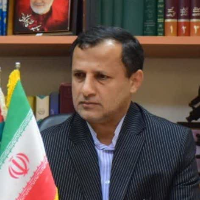Comparing Investigation on Landsat-ETM+ and IRS-P6-LISS IV Data for Canopy Cover Mapping of Zagros Forests (Case Study, Javanroud Forests)
In order to evaluate capability of the Landsat-ETM and IRS-P6-LISS IV images for canopy cover mapping a case study was done on the forests of Javanroud in Kermanshah province. After evaluation of the geometric and radiometric quality of the data, the ETM+ images, the ETM+ images were geometrically corrected with GCPs and the images were registered with RMSE error 0.46 and 0.48 pixels, for X and Y, respectively. The COST method was used to atmospheric correction. To reduce the effect of soil reflectance, suitable vegetation indices were prepared using soil line parameters. A ground truth map was generated through random systematic sampling method with sample size of 60×60m2. In each plot, the canopy of trees was measured in two directions and percentage of canopy cover was computed in hectare. The plots were classified to four classes (very thin, thin, semi-dense and dense) based on canopy cover. 25% of sample plots from each class was selected as training area and the best spectral bands were selected using divergence separability index between classes. Regarding to area of canopy cover computing and in order to pixel size equalization of LISS-IV and ETM+ images, 6×6 pixel size of LISS-IV images were merged and their average value was used as a final value of merged pixel. Supervised classification was accomplished on the best and main bands. The accuracy assessment of generated map was evaluated using 75% of sample plots. The results showed that using the best selected LISS-IV bands could better classify 4 classes than other images by maximum likelihood algorithm with 64.54% overall accuracy and 0.43 kappa coefficient. In order to develop the results, the very thin class with thin class and semi-dense with dense classes were merged and a new classification was repeated. The minimum distance to mean classifier algorithm using the best selected LISS-IV bands showed the highest overall accuracy and kappa coefficient equal to 79% and 0.58, respectively. It is concluded that in such sparse forests, low canopy area of forest species as well as the soil reflectance as background leads to undesirable results.
- حق عضویت دریافتی صرف حمایت از نشریات عضو و نگهداری، تکمیل و توسعه مگیران میشود.
- پرداخت حق اشتراک و دانلود مقالات اجازه بازنشر آن در سایر رسانههای چاپی و دیجیتال را به کاربر نمیدهد.


